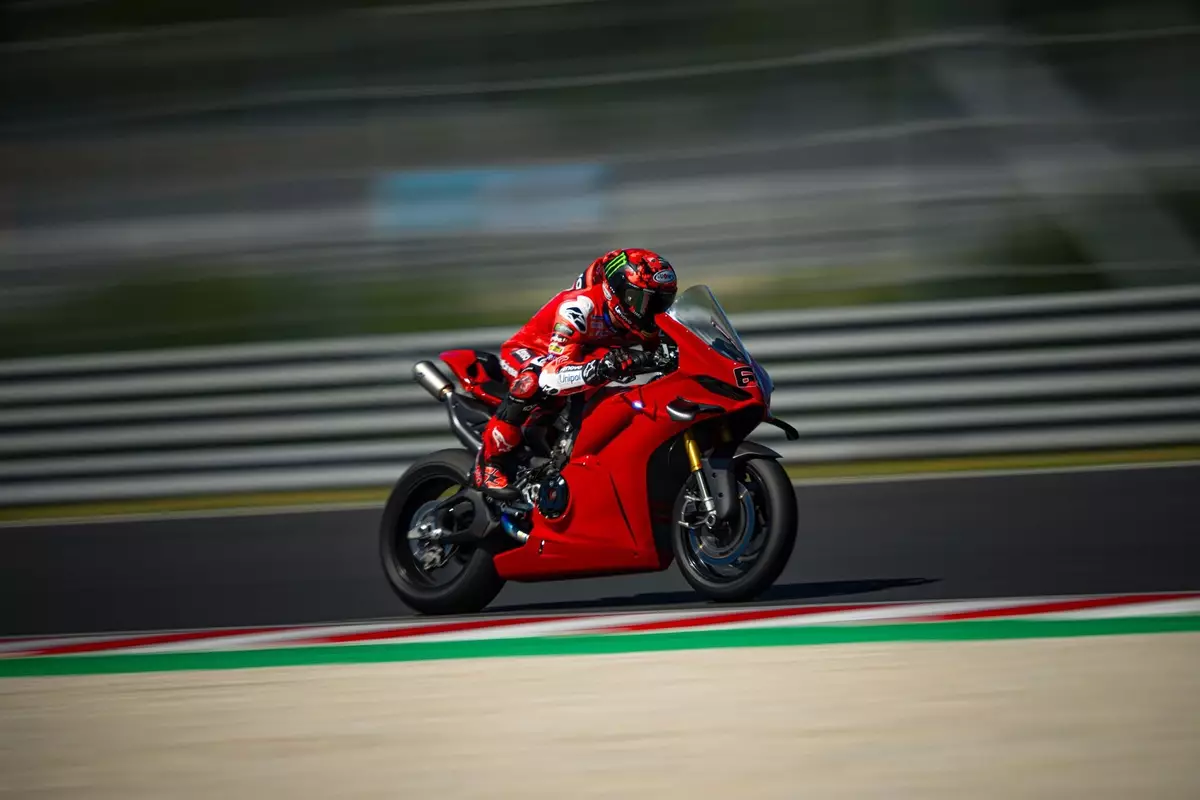Ducati’s decision to send seven Panigale V4 S Pro units to Hungary ahead of the inaugural MotoGP race at Balaton Park exemplifies a deliberate and strategic move rooted in meticulous planning. While the Italian powerhouse leads the world championships with considerable margins, their approach reveals a nuanced understanding of the importance of on-the-ground experience and technical readiness. This isn’t merely about riding laps; it’s an extension of Ducati’s overarching philosophy—leaving nothing to chance and maximizing every opportunity to gain competitive advantage. In a sport where milliseconds and subtle handling differences create the difference between victory and defeat, Ducati’s proactive engagement with its riders on a new circuit exemplifies a masterclass in preparation.
Rather than relying solely on data from simulations or virtual models, Ducati emphasizes on-site familiarization, embracing the unpredictability and unique aspects of a fresh track. Conducting such private tests demonstrates their desire to integrate rider feedback seamlessly into the development process, fine-tuning machine setup in a way that factory engineers can rarely replicate remotely. This level of detail underscores Ducati’s confidence in its engineering prowess and the importance of human factors—adaptability, feel, and intuition—that differentiate top teams. Their approach signals an understanding that success in MotoGP is as much about mental and tactical readiness as it is about raw speed.
Technical Ingenuity and Strategic Adaptation
One of the most compelling aspects of Ducati’s preparation is the deployment of their flagship street bike, the Panigale V4 S Pro, in a near-race configuration. This isn’t simply a marketing stunt; it’s a calculated move to leverage a machine closely related to their racing platform—ensuring that rider feedback translates effectively to the Desmosedici GP. Equipping each unit with over €10,000 worth of modifications—focused on brakes and suspension—while adhering to regulations exemplifies the team’s ingenuity. By pushing the boundaries within rules, Ducati gains invaluable insight into chassis behavior, handling nuances, and rider responses that can influence their Grand Prix setup.
This concentrated effort to optimize a street-derivative bike for a track test signifies a broader philosophy: understanding the intricacies of riding dynamics on a medium-velocity, technical circuit like Balaton is crucial. Their expertise in fine-tuning mechanical components and extracting maximum grip reveals an appreciation that even small improvements can be decisive on a challenging track. Such efforts underscore a key insight: dominance isn’t solely achieved through horsepower or aerodynamics but through precision, feel, and understanding the subtle interplay between rider and machine.
Riders’ Insights Signal a Confident Front
The testimonials from Ducati’s top riders—Pecco Bagnaia and Marc Marquez—highlight the effectiveness of this preparatory phase. Bagnaia’s enthusiasm about the circuit’s layout and his playful attempt at drifting suggest a rider who is eager and comfortable in a new environment. His comment about enjoying the Panigale V4 even in a light-hearted manner hints at the machine’s versatility and the rider’s trust in the bike’s handling at lower speeds and technical segments. More importantly, his acknowledgment of the track’s uniqueness and the need for careful navigation reveals a realistic understanding of the challenges ahead.
Marquez’s perspective echoes this sentiment, emphasizing the importance of rhythm and adaptation. His recognition that the circuit is “stop-and-go” points to strategic riding as a key to success, which aligns perfectly with Ducati’s meticulous planning. Both riders’ positive impressions affirm that the team’s effort to familiarize themselves with the new venue is paying dividends. Moreover, their confidence indicates that Ducati is well-positioned to translate this familiarity into competitive edge during the upcoming race.
The Context of History and Significance
Reintroducing the Hungarian Grand Prix after a three-decade hiatus carries considerable weight for the sport. Historically, Hungary has been a challenging venue, with past winners like Eddie Lawson and Mick Doohan racing at the Hungaroring, a circuit notably different from Balaton Park. Ducati’s comprehensive pre-race testing at the new location underscores their strategic foresight—not merely relying on traditional tracks but actively shaping their readiness for an entirely new environment. This reflects a broader trend among top teams: a relentless pursuit of mastery over varying circuits, recognizing that familiarity breeds confidence and precision.
The team’s early start and intense on-track activity between riders demonstrate their understanding that race weekends are won through meticulous groundwork. It also sends a message to competitors: Ducati isn’t resting on its laurels, even with a commanding championship lead. Instead, the manufacturer is bolstering its advantage by ensuring every rider feels prepared and every technical element is optimized—knowing well that every detail can tip the balance in their favor.
Reflection: The Art of Preparation in MotoGP
Ducati’s recent actions embody a fundamental truth about racing: success is rooted in relentless preparation and tactical innovation. Their decision to conduct private, intensive testing on a new track exemplifies how top-tier teams blend engineering, rider experience, and strategic foresight into a cohesive effort. It reveals a mindset that refuses complacency, underscores the importance of adaptability, and highlights their commitment to maintaining dominance not through hope but through disciplined, calculated action.
In a sport where variables are countless and conditions constantly shifting, Ducati’s approach offers a blueprint for excellence. Their emphasis on understanding every nuance, from technical modifications to rider comfort, underscores a deeply ingrained belief: to win, one must not only be fast but also thoroughly prepared. As the Hungarian GP approaches, this meticulous preparation may well translate into a decisive edge, illustrating that—sometimes—the best victory strategy is to outthink and outwork one’s rivals well before the race begins.

